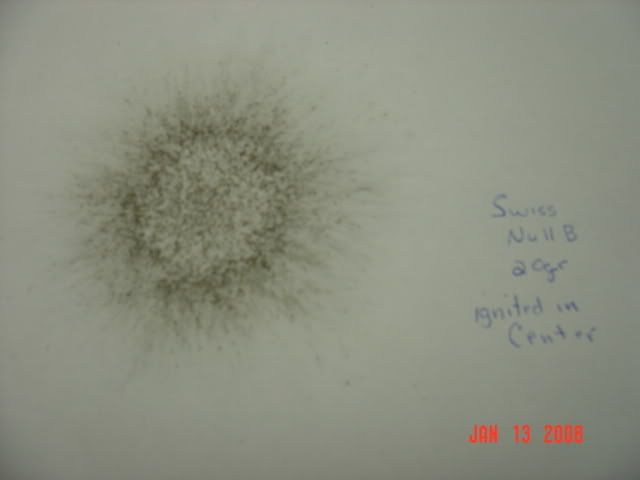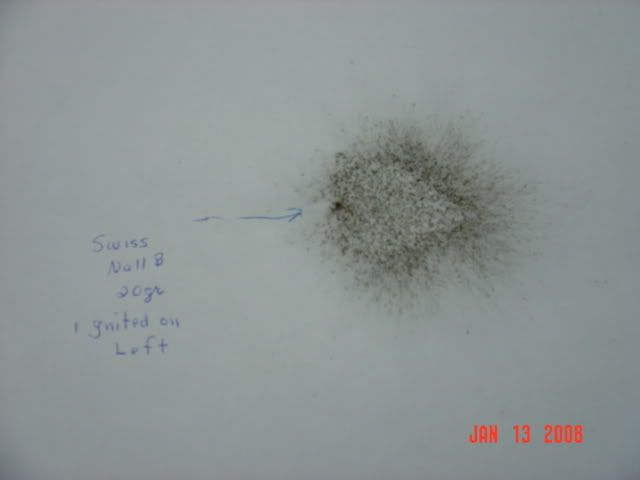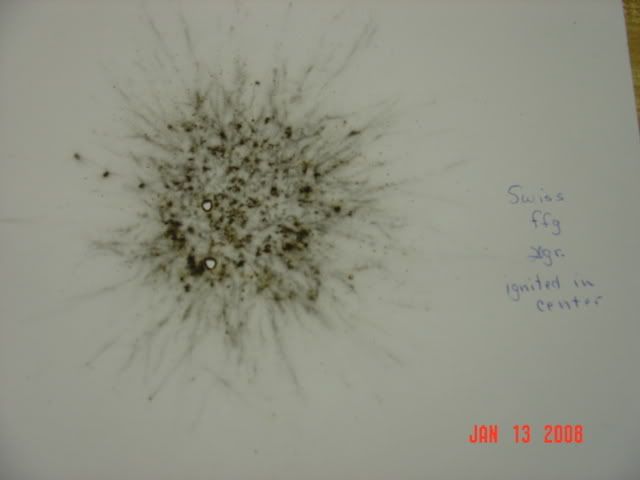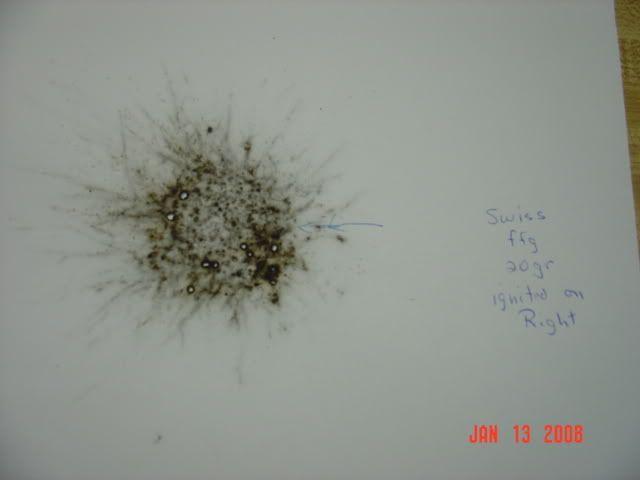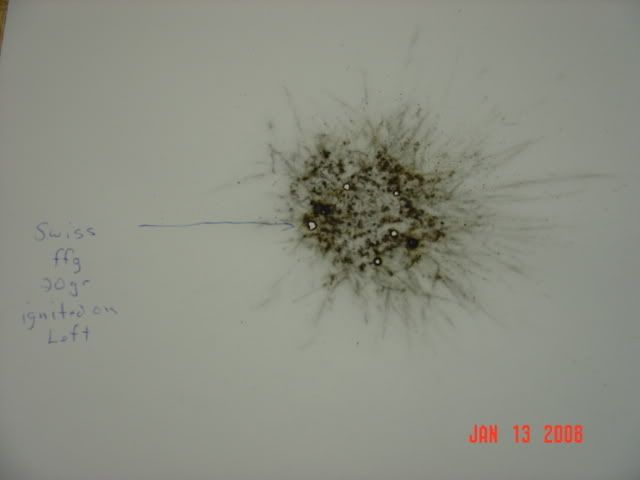paulvallandigham
Passed On
- Joined
- Jan 9, 2006
- Messages
- 17,538
- Reaction score
- 80
I am shooting two flintlocks right now. One has the vent situated so that a line across the top of the pan splits the vent hole in half, half above and half below the line.
The other has the vent hole located above the pan. In this second gun, I load the pan full of powder, level with the top, and I get very quick ignition.
With the other gun, I load only about 1/3 the capacity of the pan, and bank the powder away from the barrel and touch hole. I get equally quick ignition. If i were to fill the pan with powder, so that the powder was right under, or even covering up half the vent hole, ignition is slowed notciably.
Air is rushing into the bottom of the burning powder, and the hot part of the flames is above that surface. When you load the pan right up to the vent, or block it, the cool air prevents the heat above from getting down and into the vent to ignite the main charge. The powder has to burn DOWN to a point where the rising heat can enter the vent hole to ignite your main charge.
The gunmaker-- Craig Witte, of Farimount, Illinois-- understood this about Flintlocks, as his Father( O.E." Curly " Witte ) is a gunsmith and gun builder, and Craig has been making and shooting Flintlocks since he was a kid, learning at his father's shop. He set the hole in my fowler higher so that the pan can be filled. Then he widened the pan and polished the heck out of it to make it a larger target for sparks to hit, and to make it much easier to wipe clean after each shot with a cleaning patch.
I have fired Flintlocks owned by other men with the vent hole down towards the bottom of the pan. Unless the flashpowder remained banked against that outside wall of the pan, you suffered the " fuse effect " delay in ignition. If you are shooting off a rest, that may not be much of a problem. Shooting off-hand, it is.
The other has the vent hole located above the pan. In this second gun, I load the pan full of powder, level with the top, and I get very quick ignition.
With the other gun, I load only about 1/3 the capacity of the pan, and bank the powder away from the barrel and touch hole. I get equally quick ignition. If i were to fill the pan with powder, so that the powder was right under, or even covering up half the vent hole, ignition is slowed notciably.
Air is rushing into the bottom of the burning powder, and the hot part of the flames is above that surface. When you load the pan right up to the vent, or block it, the cool air prevents the heat above from getting down and into the vent to ignite the main charge. The powder has to burn DOWN to a point where the rising heat can enter the vent hole to ignite your main charge.
The gunmaker-- Craig Witte, of Farimount, Illinois-- understood this about Flintlocks, as his Father( O.E." Curly " Witte ) is a gunsmith and gun builder, and Craig has been making and shooting Flintlocks since he was a kid, learning at his father's shop. He set the hole in my fowler higher so that the pan can be filled. Then he widened the pan and polished the heck out of it to make it a larger target for sparks to hit, and to make it much easier to wipe clean after each shot with a cleaning patch.
I have fired Flintlocks owned by other men with the vent hole down towards the bottom of the pan. Unless the flashpowder remained banked against that outside wall of the pan, you suffered the " fuse effect " delay in ignition. If you are shooting off a rest, that may not be much of a problem. Shooting off-hand, it is.






